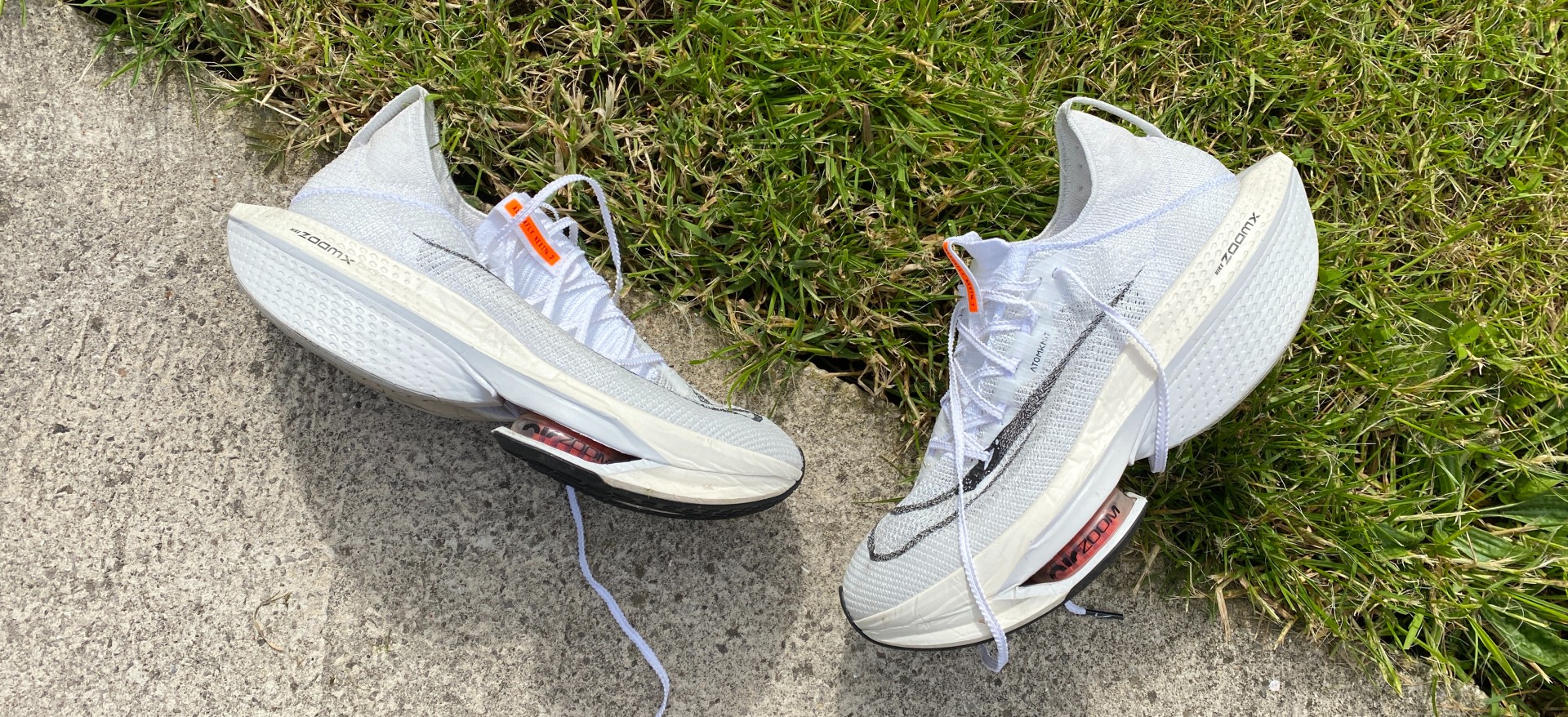Our Verdict
The Nike Alphafly NEXT% 2 is a superb marathon racing shoe and an improvement on the original Alphafly. It’s very expensive, somewhat outlandish and struggles on tight corners, but in the right conditions the Alphafly NEXT% 2 is as good as it gets, for long races in particular.
For
- Efficient and fast ride
- Comfortable over long distances
- Extra foam under forefoot
Against
- Heavier than original
- Less impressive on twisty courses
- More expensive than rivals
You can trust Coach
Even in the high-stack, high-tech world of carbon racing shoes, the Nike Air Zoom Alphafly NEXT% 2 stands out. It’s bigger and brasher than the rest, and stands out as the current pinnacle of technical innovation in racing shoes, taking the bouncy-foam-plus-carbon-plate formula to extremes.
For some the Alphafly NEXT% goes too far and demonstrates why authorities need to clamp down on shoes that are providing too much assistance to runners. For others it’s simply too much shoe to ever consider racing in, even compared with the likes of the Nike Vaporfly NEXT% 2, which is hardly a stripped-back racing flat itself.
Taken on its merits alone, however, there is no denying the Alphafly NEXT% 2 is an incredible racing shoe, one of the very best carbon plate running shoes, and on the right course it’s the best marathon running shoe.
Nike Air Zoom Alphafly NEXT% 2 Review: Price And Availability
The Alphafy NEXT% 2 will be available in limited quantities from 15th June in a white “proto” colourway, similar to the launch editions of the Nike ZoomX Streakfly and Vaporfly NEXT% 2. Search the Nike US or Nike UK websites to see if any sizes are available.
While I have had the shoes, I haven’t been told the price. This article will be updated as soon as possible after release.
Update: The UK price is £274.95 and is available to buy on Nike UK now.
Design And Fit
The Alphafly NEXT% 2 stays faithful to the design choices of the original, but makes a series of refinements.
Perhaps the most striking update is in the midsole of the shoe. This is still made up of a large chunk of Nike’s bouncy PEBA-based ZoomX foam plus two Air Zoom pods in the forefoot, as well as a full-length carbon plate. However, on the Alphafly 2 Nike has added some ZoomX foam under the Air Zoom pods. The intention of this change is to provide even more energy return and comfort under the forefoot, and smooth out the transition from heel to toe.
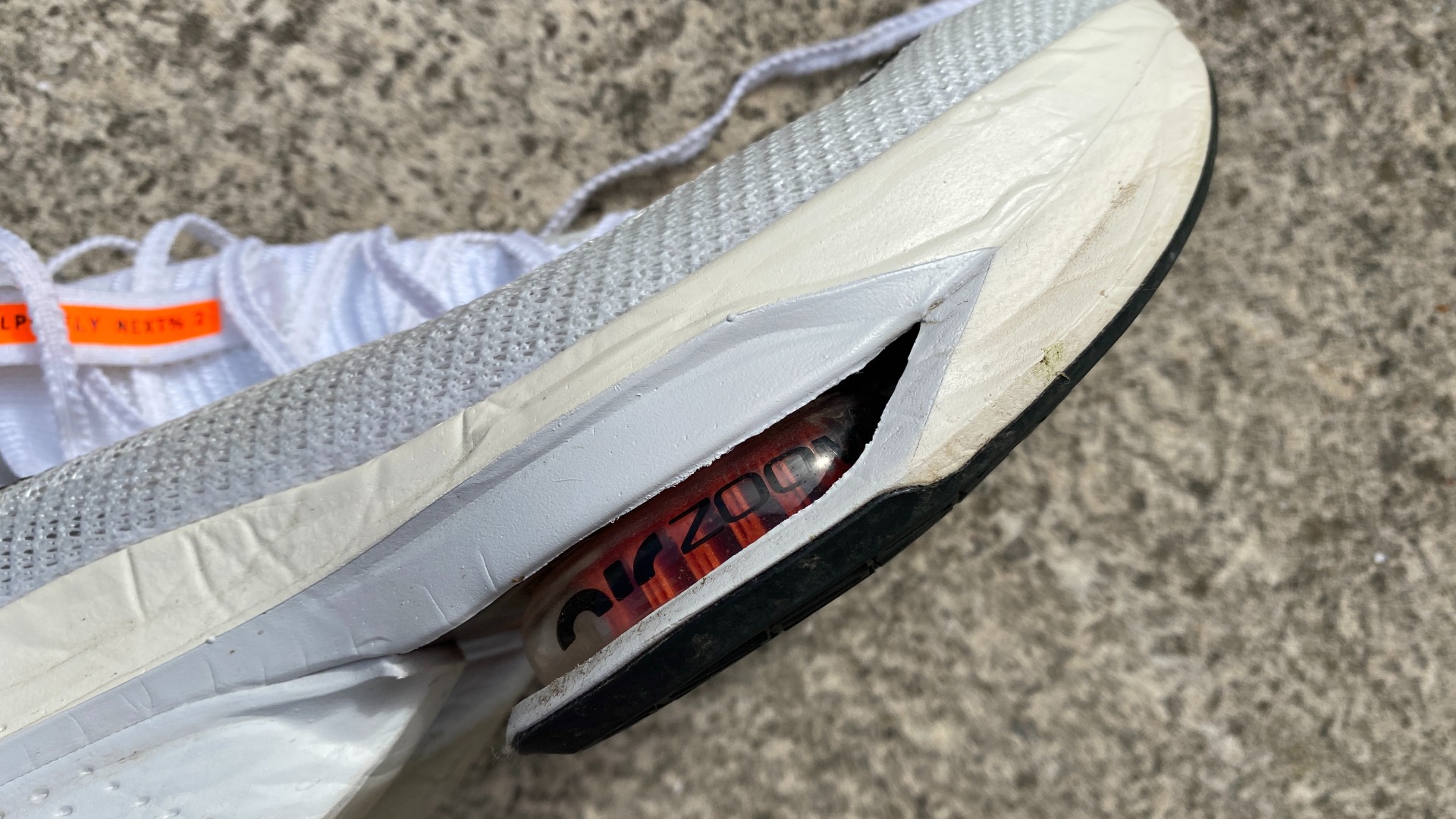
The shoe is also slightly wider at the heel, which improves its stability a little, though of course stability is never going to be a strong suit for a high-stack shoe with such soft foam in the midsole.
Nike has also tweaked the outsole of the shoe, changing the pattern on the rubber and using a thinner material which reduces weight and creates the room to fit the extra foam under the Air Zoom pods. There is also a more substantial midsole cut-out which shows more of the carbon plate.
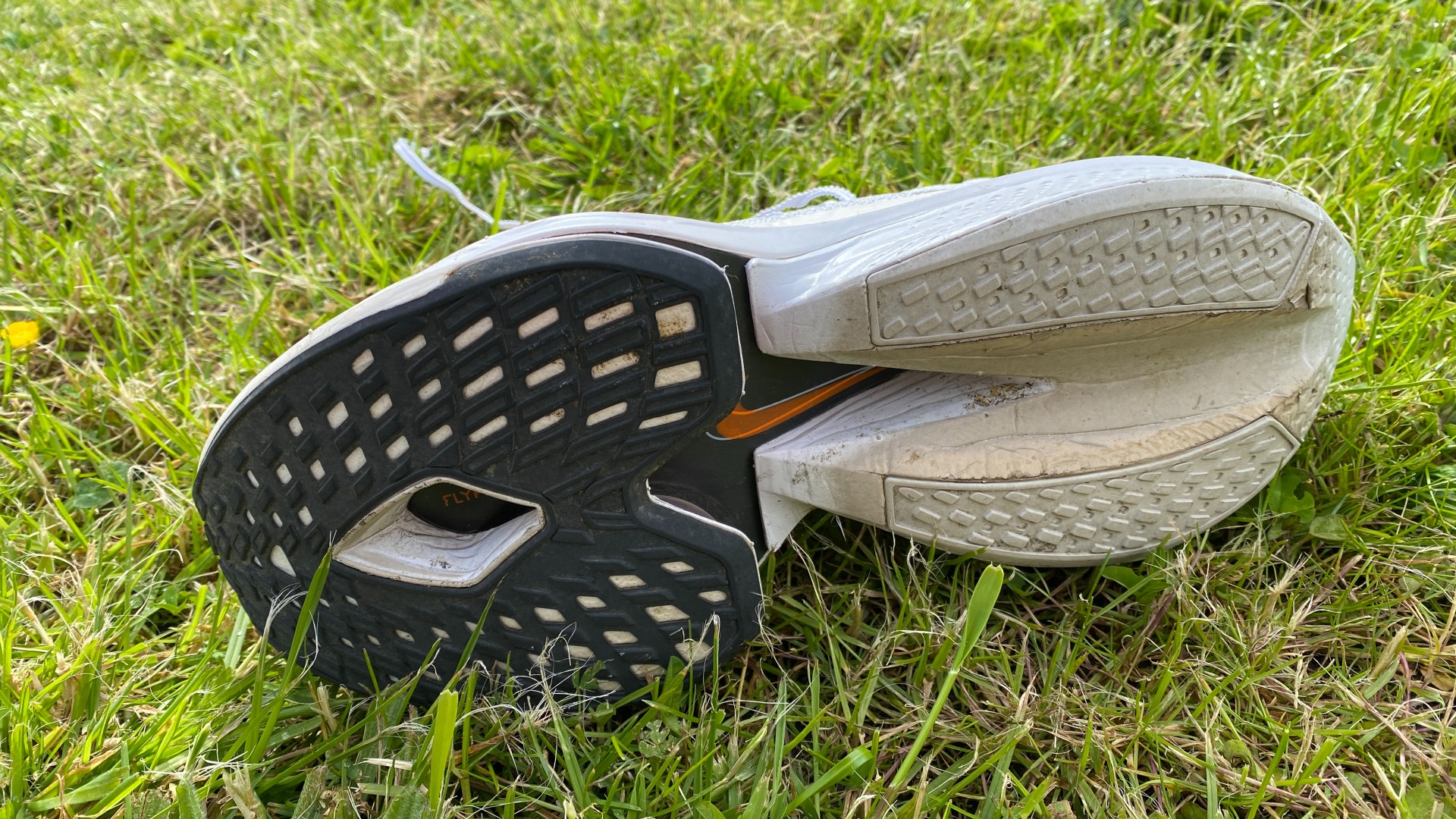
All these updates have made the Alphafly 2 heavier than the original. My UK size 9 shoes were actually different weights – 8.6oz (244g) and 8.9oz (251g) – while Nike lists a US 10/UK 9 as weighing 8.8oz (249g). In comparison, my size UK 9 Alphafly NEXT% weighs 8.2oz (232g), and my Vaporfly NEXT% 2 is 7.3oz (207g).
Nike doesn’t list an official stack height for the Alphafly NEXT% 2, but it certainly bumps right up against the 40mm limit set by World Athletics. Nike told me that the drop of the Alphafly NEXT% 2 is 8mm, which is double the 4mm of the original, though the original felt like it had a higher drop than 4mm to me when running in it.
The Atomknit 2.0 upper has more structure and support around the heel, and loses the overlay over the toes to make it feel less restrictive in the forefoot. The Alphafly is not an easy shoe to pull on – I needed to use the pull tabs on the tongue and collar to get even my narrow foot in. Once on, however, the fit is secure and comfortable in my normal size, and I had no slippage around the redesigned heel.
How I Tested This Shoe
I’ve run 82km in the Nike Alphafly NEXT% 2 ahead of its launch, including a steady 20-miler (32km), a parkrun, a hard workout and another long run with an extended section at marathon pace. I have also used the original Nike Alphafly NEXT% extensively, running a 2hr 29min and 2hr 33min marathon in it in 2021, and I’ve also logged a lot of races in the Vaporfly NEXT% 2.
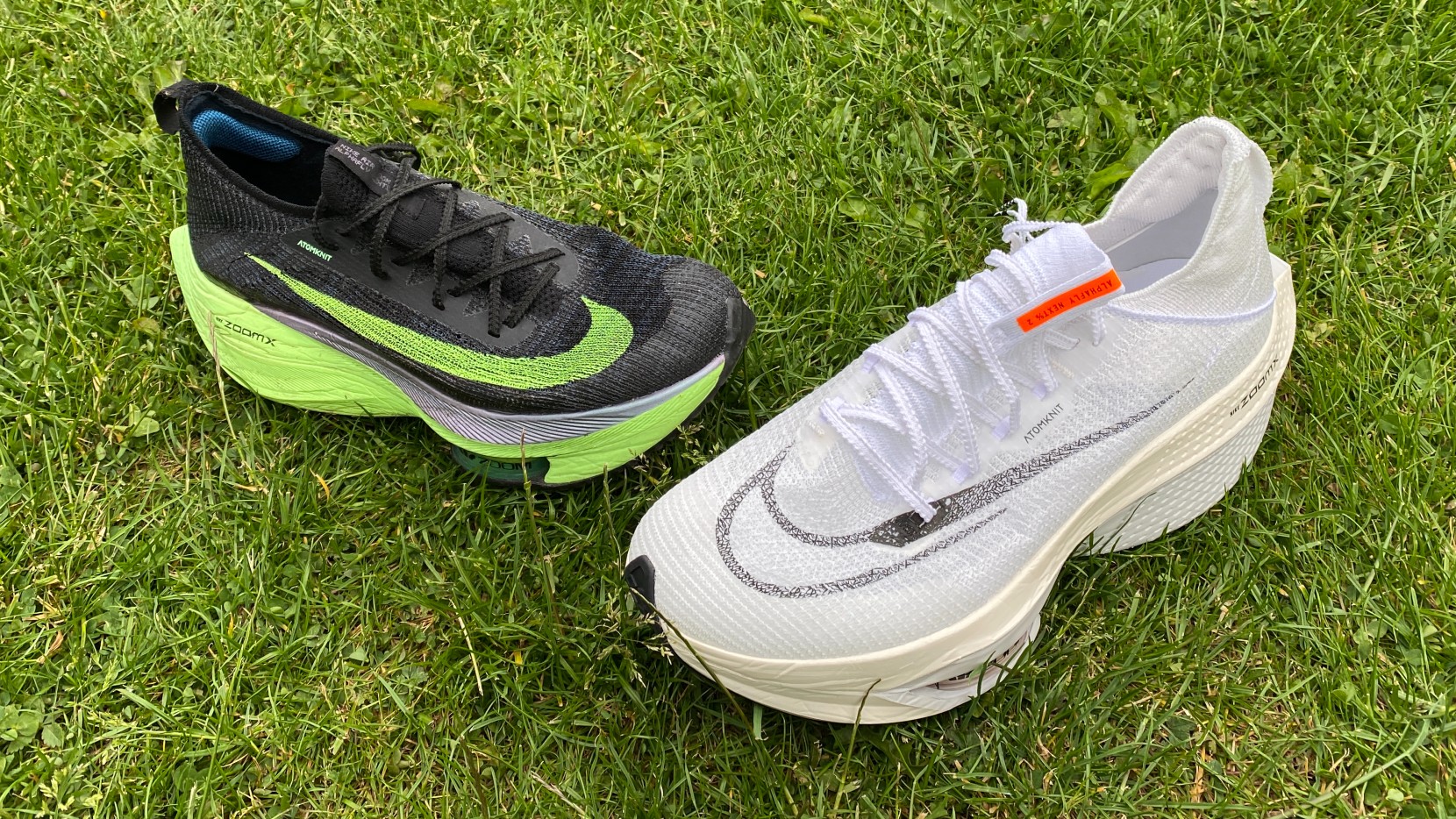
Running Performance
Like the original Alphafly, the 2 feels like a different shoe when you run fast in it. When jogging slowly it feels large and cumbersome, but once you get rolling the shoe springs into life and the ride becomes remarkably smooth. Running at fast paces almost feels effortless.
My first run in the shoe was a tough workout where I ran 5K at 3min 30sec/km, followed by eight hill reps and then 3km at 3min 20sec/km. I do variations on this workout fairly regularly and have done it in all kinds of racing shoes. It’s one you’d think would be best attempted in a lighter, nimbler shoe, but I felt better in that second 3km in the Alphafly 2 than I have done in any other shoe. Once you get up to pace, it just helps you stay there, and the transition from heel to toe does feel smoother and faster than on the original Alphafly.
I enjoyed it even more on my second run, a 90-minute Sunday run where I planned to ease through the gears and run at a steady pace judged by feel and heart rate when I hit a long straight section of smooth roads. The Alphafly 2 positively purrs in those conditions, and the odd glance at my pace stats during this section showed that I was running a lot faster than expected given my perceived effort level.
The one fly in the ointment during this was an about turn on slightly slick asphalt, where I felt that I had to be very careful in the Alphafly to avoid slipping. It’s never going to be an agile shoe but the weight and size that disappears when powering along straight roads reappears when you round a sharp corner.
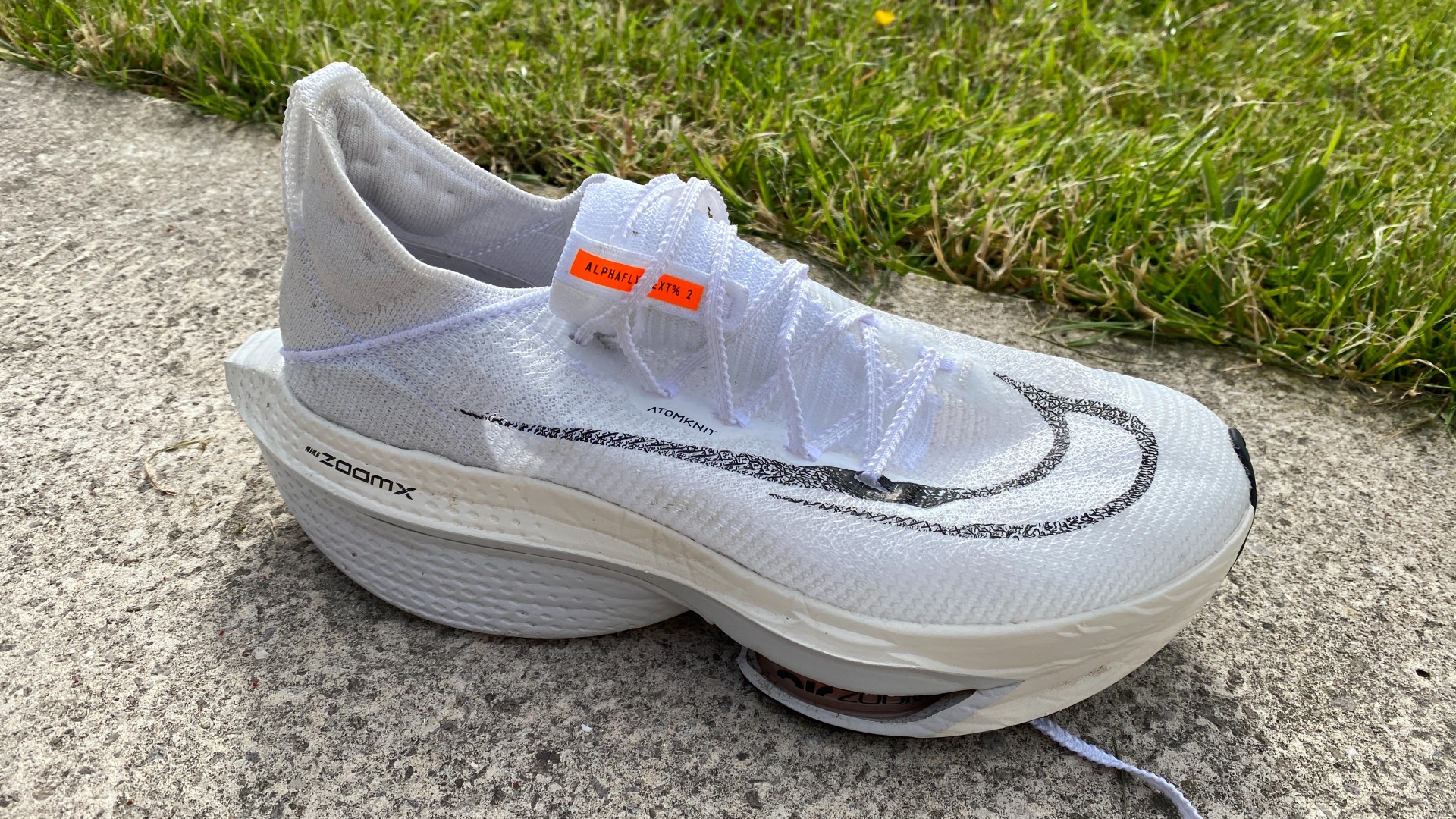
While Nike bills the Alphafly 2 as a long-distance racing shoe, I found it also performs well over shorter distances – providing you have the right conditions of good roads and few turns. I ran Fleetwood Promenade parkrun in the shoe, which is an out-and-back course on concrete, and while a brutal headwind in the first half of the route, followed by a powerful tailwind in the second, somewhat scrambled my race plans, the Alphafly felt as quick as any other carbon shoe.
My final run in the Alphafly 2 ahead of launch was a 32km run on undulating roads, running to feel rather than aiming for any set pace. Once again I found my pace was faster than I expected for my perceived effort throughout. The shoe also protected my legs well, something that was particularly noticeable the following day when I woke up without any muscle ache.
Is The Nike Alphafly NEXT% 2 Worth It?
The Alphafly NEXT% 2 takes the key aspects of the Alphafly and refines them to improve the shoe further, despite the weight gain this involves. In the right conditions it’s an absolute delight to run in, and while its benefits are maximised over longer events like the marathon, it’s a great option for short races too.
However, you do need the right conditions for it to really shine. On courses with lots of twists and turns, or uneven roads, the shoe’s size is a disadvantage compared with nimbler, lighter shoes like the Vaporfly, Asics Metaspeed Sky+ or Adidas Takumi Sen 8.
The Alphafly 2 is also significantly more expensive than other carbon shoes, and the performance edge you get only really comes into play on marathons on great roads, so many runners who don’t target a big marathon each year will find better value in a more versatile, cheaper carbon shoe.
If you are someone who plans out your race calendar around one or two target marathons each year, I’d say it stands out as the top pick. It’s the shoe I currently plan to use for my main goal race this year, the Berlin Marathon.
The only other caveat is that while I do think the Alphafly 2 is an improvement on the original, it’s not such a big leap in performance that I would ignore the first Alphafly if it was available for significantly less. I’d expect to see the original shoe in sales for $100/£100 less than the NEXT% 2 for a while after launch, and with that kind of saving, it would probably be what I’d spend my money on.

Nick Harris-Fry is a journalist who has been covering health and fitness since 2015. Nick is an avid runner, covering 70-110km a week, which gives him ample opportunity to test a wide range of running shoes and running gear. He is also the chief tester for fitness trackers and running watches, treadmills and exercise bikes, and workout headphones.
